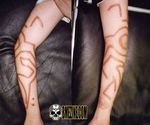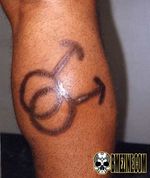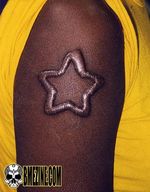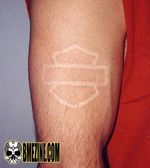|
|
| Line 1: |
Line 1: |
| <html><div class="mw-content-ltr" dir="ltr" id="mw-content-text" lang="en"><div class="thumb tright"><div class="thumbinner" style="width:152px;"><a class="image" href="/index.php?title=File:Branding-1.jpg"><img alt="" class="thumbimage" height="125" src="/images/thumb/1/1d/Branding-1.jpg/150px-Branding-1.jpg" width="150"/></a> <div class="thumbcaption"><div class="magnify"><a class="internal" href="/index.php?title=File:Branding-1.jpg" title="Enlarge"><img alt="" height="11" src="/skins/common/images/magnify-clip.png" width="15"/></a></div>Branding</div></div></div>
| | [[File:Branding-1.jpg|thumb|right|150px|Branding]] |
| <div class="thumb tright"><div class="thumbinner" style="width:152px;"><a class="image" href="/index.php?title=File:Branding-2.jpg"><img alt="" class="thumbimage" height="156" src="/images/thumb/2/20/Branding-2.jpg/150px-Branding-2.jpg" width="150"/></a> <div class="thumbcaption"><div class="magnify"><a class="internal" href="/index.php?title=File:Branding-2.jpg" title="Enlarge"><img alt="" height="11" src="/skins/common/images/magnify-clip.png" width="15"/></a></div>Branding</div></div></div>
| | [[File:Branding-2.jpg|thumb|right|150px|Branding]] |
| <div class="thumb tright"><div class="thumbinner" style="width:152px;"><a class="image" href="/index.php?title=File:Branding-3.jpg"><img alt="" class="thumbimage" height="178" src="/images/thumb/d/db/Branding-3.jpg/150px-Branding-3.jpg" width="150"/></a> <div class="thumbcaption"><div class="magnify"><a class="internal" href="/index.php?title=File:Branding-3.jpg" title="Enlarge"><img alt="" height="11" src="/skins/common/images/magnify-clip.png" width="15"/></a></div>Branding</div></div></div>
| | [[File:Branding-3.jpg|thumb|right|150px|Branding]] |
| <div class="thumb tright"><div class="thumbinner" style="width:152px;"><a class="image" href="/index.php?title=File:Branding-4.jpg"><img alt="" class="thumbimage" height="180" src="/images/thumb/6/65/Branding-4.jpg/150px-Branding-4.jpg" width="150"/></a> <div class="thumbcaption"><div class="magnify"><a class="internal" href="/index.php?title=File:Branding-4.jpg" title="Enlarge"><img alt="" height="11" src="/skins/common/images/magnify-clip.png" width="15"/></a></div>Branding</div></div></div>
| | [[File:Branding-4.jpg|thumb|right|150px|Branding]] |
| <div class="thumb tright"><div class="thumbinner" style="width:152px;"><a class="image" href="/index.php?title=File:Branding-5.jpg"><img alt="" class="thumbimage" height="192" src="/images/thumb/8/80/Branding-5.jpg/150px-Branding-5.jpg" width="150"/></a> <div class="thumbcaption"><div class="magnify"><a class="internal" href="/index.php?title=File:Branding-5.jpg" title="Enlarge"><img alt="" height="11" src="/skins/common/images/magnify-clip.png" width="15"/></a></div>Branding</div></div></div>
| | [[File:Branding-5.jpg|thumb|right|150px|Branding]] |
| <div class="thumb tright"><div class="thumbinner" style="width:152px;"><a class="image" href="/index.php?title=File:Branding-6.jpg"><img alt="" class="thumbimage" height="168" src="/images/thumb/4/45/Branding-6.jpg/150px-Branding-6.jpg" width="150"/></a> <div class="thumbcaption"><div class="magnify"><a class="internal" href="/index.php?title=File:Branding-6.jpg" title="Enlarge"><img alt="" height="11" src="/skins/common/images/magnify-clip.png" width="15"/></a></div>Branding</div></div></div>
| | [[File:Branding-6.jpg|thumb|right|150px|Branding]] |
| <p><b>Branding</b> is <a href="/index.php?title=Scarification" title="Scarification">scarification</a>, usually through the application of a heated material (usually metal) to the <a href="/index.php?title=Skin" title="Skin">skin</a>, making a serious burn that eventually becomes a <a href="/index.php?title=Scar" title="Scar">scar</a>. Ideally, a healed branding looks like a pattern of thick raised lines, slightly lighter than skin color (when fully healed). However, the amount of raising or <a href="/index.php?title=Keloid" title="Keloid">keloiding</a> varies greatly, dependent on a large number of factors. Sometimes they even inset rather than raise.
| |
| </p><p>Scarification operates through controlled injury. It is not safe. That said, many things we do every day are not safe either. Practised responsibly by experienced practitioners, scarification of all kinds should fall inside "acceptable risk."
| |
| </p>
| |
| <table class="toc" id="toc"><tr><td><div id="toctitle"><h2>Contents</h2></div>
| |
| <ul>
| |
| <li class="toclevel-1 tocsection-1"><a href="#Procedure"><span class="tocnumber">1</span> <span class="toctext">Procedure</span></a></li>
| |
| <li class="toclevel-1 tocsection-2"><a href="#Healing_and_Aftercare"><span class="tocnumber">2</span> <span class="toctext">Healing and Aftercare</span></a></li>
| |
| <li class="toclevel-1 tocsection-3"><a href="#Longterm_Health_Issues"><span class="tocnumber">3</span> <span class="toctext">Longterm Health Issues</span></a></li>
| |
| <li class="toclevel-1 tocsection-4"><a href="#Tattoos"><span class="tocnumber">4</span> <span class="toctext">Tattoos</span></a></li>
| |
| <li class="toclevel-1 tocsection-5"><a href="#Removal"><span class="tocnumber">5</span> <span class="toctext">Removal</span></a></li>
| |
| <li class="toclevel-1 tocsection-6"><a href="#History"><span class="tocnumber">6</span> <span class="toctext">History</span></a></li>
| |
| <li class="toclevel-1 tocsection-7"><a href="#Cold_Branding"><span class="tocnumber">7</span> <span class="toctext">Cold Branding</span></a>
| |
| <ul>
| |
| <li class="toclevel-2 tocsection-8"><a href="#Procedure_2"><span class="tocnumber">7.1</span> <span class="toctext">Procedure</span></a></li>
| |
| </ul>
| |
| </li>
| |
| <li class="toclevel-1 tocsection-9"><a href="#See_Also"><span class="tocnumber">8</span> <span class="toctext">See Also</span></a></li>
| |
| </ul>
| |
| </td></tr></table>
| |
| <h2> <span class="mw-headline" id="Procedure">Procedure</span></h2>
| |
| <p>There are many ways to branding. The traditional way is <a href="/index.php?title=Strike_Branding" title="Strike Branding">strike branding</a>, but new forms like <a href="/index.php?title=Electrocautery" title="Electrocautery">electrocautery</a>, <a href="/index.php?title=Electrosurgery" title="Electrosurgery">electrosurgery branding</a> (also known as laser branding). Some people also brand with a hand held <a class="mw-redirect" href="/index.php?title=Cautery_pen" title="Cautery pen">cautery pen</a>.
| |
| </p><p>A brand hurts less than you'd think. Most of the pain in branding is psychological. That said, a brand cauterises skin and will strike exposed nerve endings - the body's pain receptors. It only hurts for a second until the nerves are burned away (Not like a minor burn, like on your stove, which only burns the surface). However, the <a href="/index.php?title=Endorphin_Rush" title="Endorphin Rush">endorphin rush</a> can be extreme. During the long healing period the brand will be very sore, especially if it is on a body part which flexes.
| |
| </p><p>If you experience no pain sensation you should speak to a doctor. You may have a neurological disorder or leprosy.
| |
| </p>
| |
| <h2> <span class="mw-headline" id="Healing_and_Aftercare">Healing and Aftercare</span></h2>
| |
| <p>A brand takes a long time to heal. It will probably look very scary for a while. Brands go through a few phases of healing, which differ in length from brand to brand a great deal. First they go through a scabby phase where they look like a horrible wound. Then they heal as a bright red scar which slowly becomes pinker, and then eventually become slightly lighter than normal skin color. Full healing generally takes around six months, but initial healing is often done within a month or two.
| |
| </p><p>There are two main schools of thought as to the aftercare of scarification in general. Many artists believe that a LITHA ("leave it the hell alone") method is best. Assuming that the initial cuts are well done, by leaving it alone, the body will generally heal a fairly consistent wound. The downside of this method is that if the person's genetics are not prone to keloiding, the amount of raised scar will be fairly minimal.
| |
| </p><p>A brand is, to all extents and purposes, a burn (generally 2nd degree). The recommended burn therapy still stands as the best after-care for branding. Leave it exposed to the air and do not cover. If the skin peels away then it may be advisable to cover the lesion to prevent infection. A saline bath is also helpful.
| |
| </p><p>The other school of thought on scarification aftercare is to irritate the wound (using a variety of methods ranging from simply picking the scab, to rubbing it with steel wool or a toothbrush, to using chemical and exfoliant formulas). Irritating a healing scar will greatly increase the amount of scarring, but at the same time, almost always leads to inconsistent scarring (that is, different parts of the scar will raise different amounts).
| |
| </p><p>If your brand (or any scarification) doesn't heal the way you'd like it to (for example, inconsistent keloiding), you can have it touched up using secondary scarification sessions.
| |
| </p>
| |
| <h2> <span class="mw-headline" id="Longterm_Health_Issues">Longterm Health Issues</span></h2>
| |
| <p>It should be noted that recent studies have been started around the safety of vapors given off during the use of surgical cauteries. You see, doctors removing <a class="mw-redirect" href="/index.php?title=Genital_warts" title="Genital warts">genital warts</a> were ending up with the exact same warts forming in their sinuses due to the inhalation of the vapors!
| |
| </p>
| |
| <h2> <span class="mw-headline" id="Tattoos">Tattoos</span></h2>
| |
| <p>Brandings can be tattooed over, but the scar has to be WELL HEALED (in generally, at least a year old). Assuming that the scar is well healed, it should be able to hold ink just as well as "normal" skin. If the colour is solid (for example a large black area) the scar will probably still be quite visible, but if the tattoo is multicoloured, it will mask most scars.
| |
| </p><p>Some people, especially those who are not genetically prone to keloiding, also choose to "exaggerate" a healed brand by outlining it in a light red or white, making it easier to see.
| |
| </p>
| |
| <h2> <span class="mw-headline" id="Removal">Removal</span></h2>
| |
| <p>In theory, a cosmetic surgeon can remove a brand using lasers and other advanced techniques, but it will be very expensive and not necessarily effective. Don't get a brand if you don't want one—it's a serious burn resulting in a serious burn scar, and must be removed as such. Think of the time it takes for a burn victim to cover their scars.
| |
| </p><p>Under any realistic context, removal of brands is not an option.
| |
| </p>
| |
| <h2> <span class="mw-headline" id="History">History</span></h2>
| |
| <p>Historically (in Europe), branding was generally limited to punishment. Both the English (with an S on the cheek) and the French (with a fleur de lis on the shoulder) branded criminals, along with almost every other culture. In modern times, black fraternity members commonly get brands of the fraternity's letters.
| |
| </p>
| |
| <h2> <span class="mw-headline" id="Cold_Branding">Cold Branding</span></h2>
| |
| <p>A very small number of people have experimented with cold branding using liquid nitrogen. "Freeze branding" is extremely rare, if not largely unheard of, among body modification enthusiasts, but many ranchers regard it as the best way to brand their animals as it does only minimal damage. The animals are easy to identify, as any hair that grows from the brand grows in white, and this effect is permanent.
| |
| </p>
| |
| <h3> <span class="mw-headline" id="Procedure_2">Procedure</span></h3>
| |
| <p>The actual procedure is surprisingly similar to strike branding. Instead of immersing the (often copper) iron into the heat of a propane torch, the iron is bathed in a solution of liquid nitrogen (or any number of other cooling agents—another common solution is a 5% dry ice, 95% pure alcohol solution). The iron is then pressed to the flesh. The amount of time is determined by the thickness of the skin; the thicker, the longer. For horses and cows, this usually means between thirty seconds and a minute—for humans it should be far less.
| |
| </p><p>If a good brand has been achieved, an indent in the shape of the brand is left; within five to fifteen minutes it becomes level and then swells up. When hair grows back, it should be white. If the brand is left on longer, the hair won't grow back at all (but the amount of scarring should be minimal). Many ranchers prefer freeze branding because of the LACK of any keloiding (and because it's less traumatic to the animal).
| |
| </p><p>Freeze branding takes a lot longer to do than fire branding, and as such is not economically viable to the larger ranchers who need to process staggering numbers of animals. In addition, freeze branding takes a few days to become evident, whereas fire branding is immediate.
| |
| </p>
| |
| <h2> <span class="mw-headline" id="See_Also">See Also</span></h2>
| |
| <ul><li> <a href="/index.php?title=Scarification" title="Scarification">Scarification</a>
| |
| </li></ul>
| |
|
| |
|
| | '''Branding''' is [[Scarification|scarification]], usually through the application of a heated material (usually metal) to the [[Skin|skin]], making a serious burn that eventually becomes a [[Scar|scar]]. Ideally, a healed branding looks like a pattern of thick raised lines, slightly lighter than skin color (when fully healed). However, the amount of raising or [[Keloid|keloiding]] varies greatly, dependent on a large number of factors. Sometimes they even inset rather than raise. |
|
| |
|
| </div></html>
| | Scarification operates through controlled injury. It is not safe. That said, many things we do every day are not safe either. Practised responsibly by experienced practitioners, scarification of all kinds should fall inside "acceptable risk." |
| | |
| | __TOC__ |
| | |
| | ==Procedure== |
| | |
| | There are many ways to branding. The traditional way is [[Strike Branding|strike branding]], but new forms like [[Electrocautery|electrocautery]], [[Electrosurgery|electrosurgery branding]] (also known as laser branding). Some people also brand with a hand held [[Cautery pen|cautery pen]]. |
| | |
| | ==Healing and Aftercare== |
| | |
| | A brand takes a long time to heal. It will probably look very scary for a while. Brands go through a few phases of healing, which differ in length from brand to brand a great deal. |
| | |
| | ==Longterm Health Issues== |
| | |
| | It should be noted that recent studies have been started around the safety of vapors given off during the use of surgical cauteries. You see, doctors removing [[Genital warts|genital warts]] were ending up with the exact same warts forming in their sinuses due to the inhalation of the vapors! |
| | |
| | ==Tattoos== |
| | |
| | Brandings can be tattooed over, but the scar has to be WELL HEALED (in generally, at least a year old). Assuming that the scar is well healed, it should be able to hold ink just as well as "normal" skin. |
| | |
| | ==Removal== |
| | |
| | In theory, a cosmetic surgeon can remove a brand using lasers and other advanced techniques, but it will be very expensive and not necessarily effective. Don't get a brand if you don't want one—it's a serious burn resulting in a serious burn scar, and must be removed as such. |
| | |
| | ==History== |
| | Historically (in Europe), branding was generally limited to punishment. Both the English (with an S on the cheek) and the French (with a fleur de lis on the shoulder) branded criminals, along with almost every other culture. |
| | |
| | ==Cold Branding== |
| | |
| | A very small number of people have experimented with cold branding using liquid nitrogen. |
| | |
| | ===Procedure=== |
| | The actual procedure is surprisingly similar to strike branding. Instead of immersing the (often copper) iron into the heat of a propane torch, the iron is bathed in a solution of liquid nitrogen. |
| | |
| | ==See Also== |
| | * [[Scarification|Scarification]] |
Branding is scarification, usually through the application of a heated material (usually metal) to the skin, making a serious burn that eventually becomes a scar. Ideally, a healed branding looks like a pattern of thick raised lines, slightly lighter than skin color (when fully healed). However, the amount of raising or keloiding varies greatly, dependent on a large number of factors. Sometimes they even inset rather than raise.
Scarification operates through controlled injury. It is not safe. That said, many things we do every day are not safe either. Practised responsibly by experienced practitioners, scarification of all kinds should fall inside "acceptable risk."
Procedure
There are many ways to branding. The traditional way is strike branding, but new forms like electrocautery, electrosurgery branding (also known as laser branding). Some people also brand with a hand held cautery pen.
Healing and Aftercare
A brand takes a long time to heal. It will probably look very scary for a while. Brands go through a few phases of healing, which differ in length from brand to brand a great deal.
Longterm Health Issues
It should be noted that recent studies have been started around the safety of vapors given off during the use of surgical cauteries. You see, doctors removing genital warts were ending up with the exact same warts forming in their sinuses due to the inhalation of the vapors!
Tattoos
Brandings can be tattooed over, but the scar has to be WELL HEALED (in generally, at least a year old). Assuming that the scar is well healed, it should be able to hold ink just as well as "normal" skin.
Removal
In theory, a cosmetic surgeon can remove a brand using lasers and other advanced techniques, but it will be very expensive and not necessarily effective. Don't get a brand if you don't want one—it's a serious burn resulting in a serious burn scar, and must be removed as such.
History
Historically (in Europe), branding was generally limited to punishment. Both the English (with an S on the cheek) and the French (with a fleur de lis on the shoulder) branded criminals, along with almost every other culture.
Cold Branding
A very small number of people have experimented with cold branding using liquid nitrogen.
Procedure
The actual procedure is surprisingly similar to strike branding. Instead of immersing the (often copper) iron into the heat of a propane torch, the iron is bathed in a solution of liquid nitrogen.
See Also





